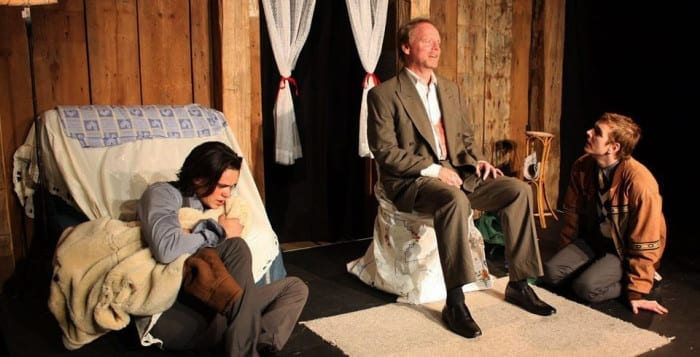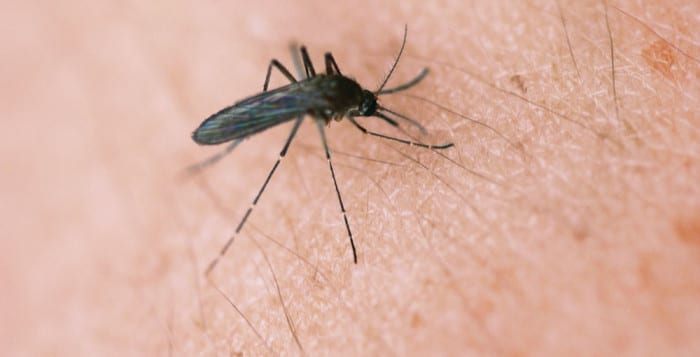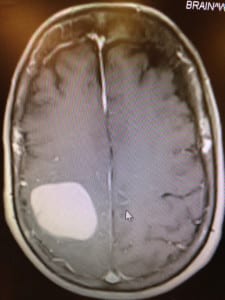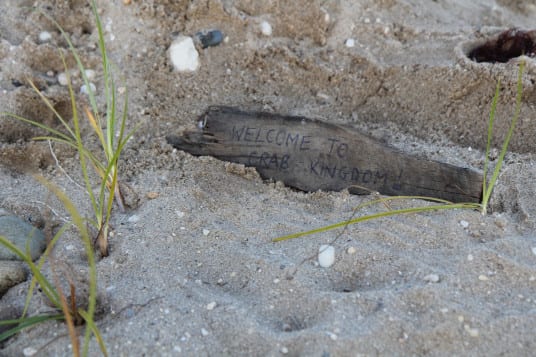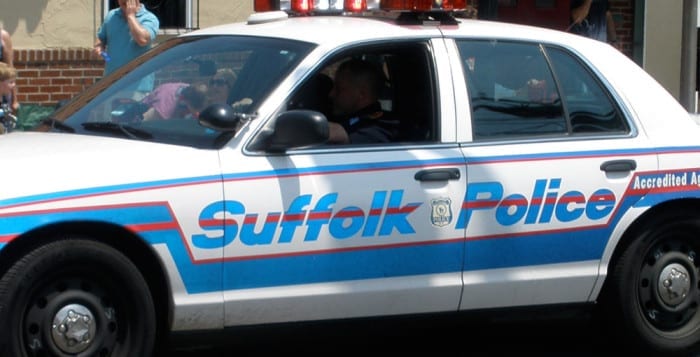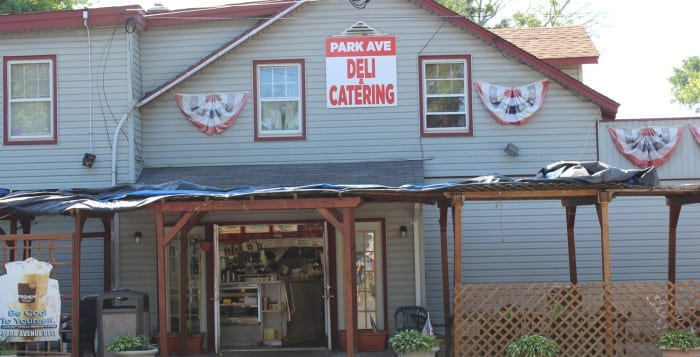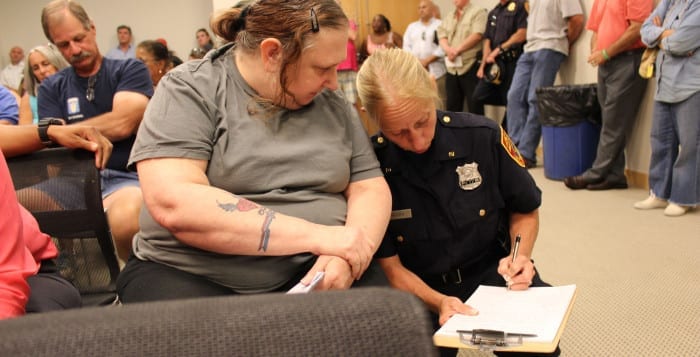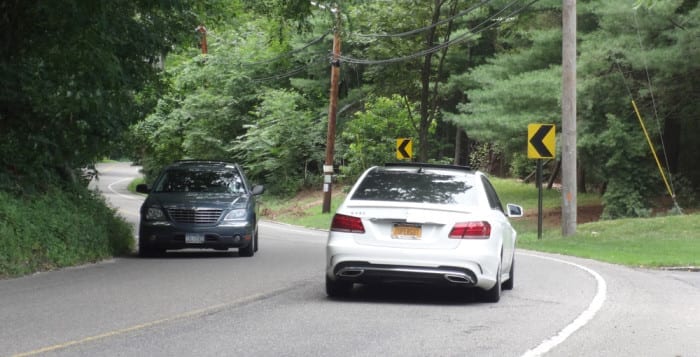By Charles J. Morgan
The three-person drama “Orphans” officially opened at the Conklin Barn in Huntington last week kicking off a 12-performance run.
It is no wonder that stars like Alec Baldwin, William Devane and Ned Beatty have played a part in the past on Broadway in this powerful, dynamic effort. Playwright Lyle Kessler has written an interlocking, emotion-laden, compelling drama about two orphaned brothers living in North Philly; one, Treat, a slick domineering “Mack the Knife” type played to the hilt by Aaron Dalla Villa; the other, Philip, a mentally challenged younger brother who manages to maintain a tenuous grip on reality, handled skillfully and deftly by Jay William Thomas. Treat is convinced that his criminal lifestyle is morally acceptable since it is all for the benefit of his meek, needy and obedient brother.
Both actors discharged their characterizations brilliantly. Kessler has painted the emotional dynamism here with the precision of Seurat’s pointillism, perhaps with an admixture of Van Gogh’s intensity. Dalla Villa and Thomas display this with character intensity, revealing each to be skillful actors with an explosive stage presence and role interpretation of the highest magnitude.
Then on to the 18-inch-high stage platform of the Conklin Barn enters Sean King as Harold. He is drunk and has been kidnapped by Treat who discovers that Harold has a load of stocks, bonds and cash in his briefcase as well as on his person. Treat ropes him to a chair and, foolishly, leaves Philip in charge of him as he goes out to make outlandish “ransom” demands.
The great dramatic change comes when Harold frees himself and becomes the salient character. Was he a mob boss? A crooked businessman? Actually, he provides intellectual and emotional help to Philip, putting him on the road to extra-mental reality.
Treat is enraged on returning, but Harold mollifies him with a promise of a job as his bodyguard at an enormous salary. At this juncture the audience is beginning to realize that King’s portrayal of Harold is something larger than life. Harold is “The Other.” He dispenses moral and ethical advice that begins to give some concrete meaning to the lives and actions of Treat and Philip. King’s consistent playing of this role is startlingly understated, which gives it far more impact than if there had been added bombast — a temptation to a lesser skilled actor.
The final scene in this two-act production occurs in a very heart-rending denouement redolent of a Renaissance triptych.
Direction was by the multitalented Jim Bonney. Any director confronted by a fast moving three-actor property has issues with blocking. Bonney overcame this problem with the fastest-paced blocking your scribe has seen in a long time. He used karate, a fist fight, wrestling and logical positioning that was keenly correct. Bonney’s skills were challenged, but he showed his directorial métier so admirably that he came up with a tightly controlled, expressive result.
Is there a philosophy in “Orphans”? Yes. But it is not a transcendent one … more of a purely human one. Yet the humanity of Harold is so overwhelming, despite his lifestyle that it penetrates the façade of “goodness” between the brothers. It is tragedy, yet its human dimension provides an element of hope. Keep in mind that Renaissance triptych.
Bonney/King Productions will present “Orphans” at the Conklin Barn, 2 High St., Huntington, through Sept. 5. Meet the playwright Lyle Kessler and join him for a Q-and-A after Sept. 4th’s performance. Tickets are $25. For more information, call 631-484-7335 or visit www.brownpapertickets.com.

